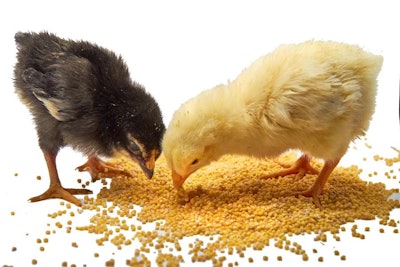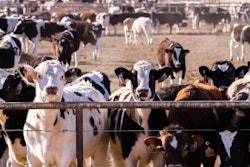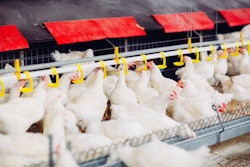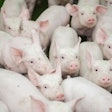
Recommendations based on real-world experience for feeding in the initial post-placement period
In 2016, I wrote an article in Feed Strategy that is perhaps the most popular piece of technical advice I have ever written about. The article was titled “Broiler super pre-starter formulation secrets revealed.” It has received more than 20,000 views each year, perhaps because the technology of super pre-starters for broilers remains at the infancy stage of development.
That article reported on initial client, but since then I had the good fortune of developing many such formulas and products that are used in varied conditions worldwide. Based on this added knowledge and field experiences (including bad ones), and because of the huge success of the first article, I believe it is high time for an update.
Below are some general recommendations based on the thought process I undergo when designing a broiler super pre-starter formula. As a reminder, this specialty product is offered during the initial post-placement period (0-4 days of age, or 50 grams per bird).
-
Cereals
I now prefer using almost exclusively extruded corn, if available. This is based on research at Iowa State University that showed young broilers benefit markedly from cooked corn. If ground broken rice is available, then I will use a mix of corn and rice, the ratio depending on price and customer preference. I insist on having cereals tested for mycotoxins, even if the price is higher, as my experiences with anti-mycotoxin agents at such an early age have not been always successful.
-
Vegetable proteins
Again, my preference is exclusively for refined and processed soybean products that are virtually devoid of anti-nutritional factors and allergens. Such products include extruded or expelled soybeans (either whole or meal), enzymatically processed meal, fermented meal and soy protein concentrate – I avoid soy protein isolate as its production method is different from that used for the concentrate and, as such, it does not prevent allergic reactions in young animals. I prefer not to use normal soybean meal at this age and stage. Depending on conditions, price and availability, I may use some wheat gluten in diets without antibiotics and/or reduced protein levels.
-
Animal proteins
Animal plasma is no longer used in most of my formulas, despite its effectiveness, because it remains either expensive or unwanted due to regional circumstances. Instead, low-temperature fishmeal is now my go-to animal protein source, despite being more expensive than vegetable proteins of the highest quality. Palatability is greatly increased by the addition of even a small amount of high-quality fish meal, but it can be totally reversed if low-quality fish meal is used instead. I avoid any other animal proteins because of variability in composition and the risk of oxidized fat.
-
Milk products
Adding a tiny amount of whey provides an extra taste (yes, recent research has shown birds have taste abilities despite previous theories), and the lactose in whey is a powerful prebiotic for enteric bacteria of the upper gut system – especially during the early period that crop microbiota is established.
-
Lipids
Any refined (good quality) vegetable oil, such as corn-soy-sunflower oil will suffice as birds can utilize them quite efficiently. Again, I avoid animal fats due to the risk of oxidation and product variability. The oil here is added mostly as a lubricant and taste enhancer rather than as an energy booster, so not much is needed to meet the 3,000 kcal ME specification.
-
Micro- and macro-minerals plus vitamins
I am not using anything different from what I prefer to use in older broilers and, unless there is a specific customer request, I will include inorganic mineral forms of good bioavailability. I am not convinced adding organic minerals at this stage offers any tangible benefits. Still, in some regions, adding organic minerals is considered a marketing advantage for commercial products. I have stopped using phytase because I am trying to keep additives to a bare minimum for such product, and the price difference is not significant enough. Regarding vitamins, I use levels established for starter broiler formulas, but I am adding extra vitamin E and a bit extra choline chloride and/or betaine, although betaine is not a vitamin per se.
-
Probiotics and prebiotics
I recommend adding two probiotics, one based on lactic acid-producing bacteria, and the other on Bifidus bacteria. This is done to ensure the upper (lactic) and lower (Bifidus) parts of the gut microbiota populations are boosted during the critical development stage. For the same reason, I recommend adding two prebiotics, one that is relatively easily fermented by bacteria (such as lactose, fructans, etc.) and another that is fermented later at the lower part of the gut (mostly based on cellulose and/or pectins). I try to avoid and source of hemicelluloses, if possible.
-
Organic acids and medications
If the production scheme is antibiotic free, then I will add a relatively high amount of organic acids (about 1% as a blend), perhaps a source of phytogenics that I have had good experiences in the past, and one or two other antimicrobial agents. The latter additions depend on market preferences and education, and local availability. I will limit or exclude such additives if antibiotics and anti-coccidial agents are available.
-
Antioxidants
I use technical antioxidants for the feed and natural antioxidants for the animal. For the first, it is often local regulations that permit or prohibit one or the other product – along with its maximum inclusion level. As many of my formulas are used for broilers raised in the warm climate of the Middle East and Southeast Asia, I prefer to limit the amount of added oil, if only because I cannot use more of the technical antioxidants. For the same reason, I insist on a blend of powerful natural antioxidants that can help the animal during thermal stress.
-
Nutrient levels
The levels of nutrient specifications have not changed considerably since the last update, but I have now included dietary electrolyte balance (and I use the relative ingredients to fix this specification) for broilers raised under hot and humid conditions. Given the very young age of broilers at which such a formula is used, excessive heat stress is rarely a problem.
-
Feed form
My preference remains that of a crumble – not a broken-up pellet, or a pellet so soft that it crumbles during handling, but a real crumble produced by a crumbling machine. Such equipment is expensive, and, for that, I often settle for a mini-pellet, with meal being the least attractive option. Pelleting should be done at low temperatures to prevent destroying sensitive nutrients and additives. Extruding or expanding a product with 5% whey is strongly advised against.
-
Feeding management
Some large operators fill their silos/bins with the allotted amount of super pre-starter and then top them up with the next feed. This eliminates hand feeding on floor paper mats or other receptacles, but it also limits access to the specialty feed. Nevertheless, it is a cost-saving method. Most users prefer to spread this specialty feed on paper mats, while filling normal feeders with the normal feed. When I design the super pre-starter and the starter, I try to follow the rule of avoiding sudden changes in ingredient and additive composition. However, this is not always possible as super pre-starters are often sold by commercial nutrition suppliers that have no control over the following feeds.
My experiences with this type of product remain positive and I see an increased use of it worldwide. Most users experience increased growth (up to 10%), or improved feed conversion ratio (between 5% and 10%), or reduced mortality (that depends a lot on initial levels), but not everything at the same time. And, not every facility will benefit from such a specialty feed, especially if everything else is top-notch. But when things are not exactly as they should be, such a specialty feed often provides the boost needed for a successful finish to market age.

















